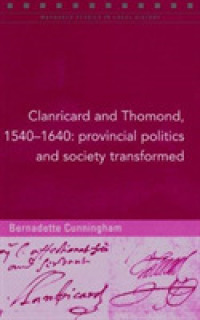Full Description
English for IT Communication provides a comprehensive introduction for students and professionals studying IT or computer science and covers all forms of technical communication from emails and memos through procedures to reports and design specs. In each case, the book offers multiple real-world examples, looking at who the texts are written for, what their purpose is, and how these affect what is on the page.
Key features of this book include:
How to write for different audiences and purposes
How to design documents for ease of access and understanding
How to communicate in multimodal media
How to reference in IEEE
Multiple different examples and breakdowns of common text types to show how they are written and to produce an understanding of quality in each
Online support material including authentic examples of different workplace genres and a reference section covering relevant research studies and weblinks for readers to better understand the topics covered in each chapter
Internationalized coverage of IT communication exemplars
This book is an accessible guide to writing effective forms of IT communications of the kind needed for all IT degree programs which aim to prepare students for the modern workplace. Practical and clearly written, it is designed to introduce readers to features of the most common genres in IT and computer science.
Contents
Chapter 1 - Audienceand Purpose in IT
1.1 Introduction to audience and purpose
1.2 Analyzing audience: who's going to read this?
1.3 Common types of IT audience
1.4 Analyzing purpose: why are they reading it?
1.5 Language for audience and purpose
1.6 Review
Chapter 2 - Design principles in IT
2.1 Introduction to design principles
2.2 Design principles
2.3 Design in IT contexts: headings
2.4 Design in IT contexts: lists
2.5 Data visualization strategies
2.6 Review
Chapter 3 - Workplace communication in IT
3.1 Introduction to workplace communication
3.2 Email
3.3 Memos
3.4 Enterprise social media
3.5 Language focus in workplace communications
3.6 Review
Chapter 4 - Process documents in SDLC
4.1 Introduction to project management documentation
4.2 Work breakdown structures
4.3 Roadmaps
4.4 Other process documents
4.5 SDLC documentation best practice
4.6 Review
Chapter 5 - System documents in SDLC
5.1 Introduction to product documentation
5.2 Product requirement document
5.3 Software requirements specification document
5.4 UX design documentation
5.5 API documentation
5.6 Quality assurance documentation
5.7 Language focus in system documentation
5.8 Review
Chapter 6 - User documents in SDLC
6.1 Introduction to user documentation
6.2 End-user documentation
6.3 Online tools
6.4 Language focus for user documents
6.5 System admin documentation
6.6 Review
Chapter 7 - Report writing in IT
7.1 Introduction to report writing in IT
7.2 Proposals
7.3 Recommendation reports
7.4 Feasibility reports
7.5 Progress reports
7.6 Evaluation reports
7.7 Common report features
7.8 Language focus in report writing
7.9 Review
Chapter 8 - IEEE referencing and formatting
8.1 Introduction to IEEE
8.2 The basics of referencing
8.3 In-text citations
8.4 End-reference list
8.5 Abbreviations and locators
8.6 IEEE style guide
8.7 Drafting tips for organizing source material
8.8. Review
Chapter 9 - Multimodal communication in IT
9.1 Introduction to multimodal communication
9.2 Video conferencing
9.3 Presentations
9.4 Language focus in presentations
9.5 Review
Chapter 10 - Case Studies: Applied communication in IT
Note to the teacher/independent learner
Case study 1: conduct a stakeholder profile
Case study 2: redesigning a company website
Case study 3: reviewing automated messages
Case study 4a: developing a micro-payments app
Case Study 4b: developing a micro-payments app
Case study 5: writing for end users







